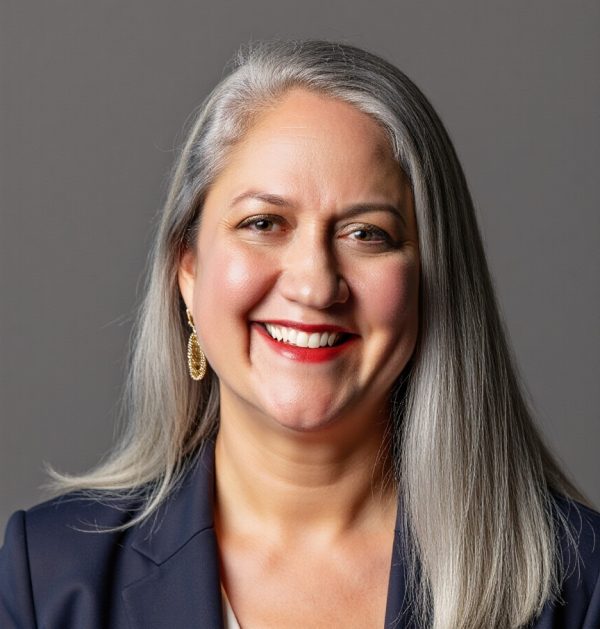Get our email updates
Stay up-to-date on the companies, people and issues that impact businesses in Syracuse, Central New York and beyond.
What's New
Upcoming Events
CNYBJ Job Board

Operation Oswego County names economic-development manager
OSWEGO, N.Y. — Operation Oswego County (OOC) has named Nathan Emmons economic-development manager. Since joining OOC in 2023, Emmons has been instrumental in advancing high-impact economic-development initiatives and building strong relationships with local businesses, the organization said in an Aug. 26 announcement. In his expanded role, Emmons will lead efforts to develop key sites, manage […]
Get Instant Access to This Article
Become a Central New York Business Journal subscriber and get immediate access to all of our subscriber-only content and much more.
- Critical Central New York business news and analysis updated daily.
- Immediate access to all subscriber-only content on our website.
- Get a year’s worth of the Print Edition of The Central New York Business Journal.
- Special Feature Publications such as the Book of Lists and Revitalize Greater Binghamton, Mohawk Valley, and Syracuse Magazines
Click here to purchase a paywall bypass link for this article.
OSWEGO, N.Y. — Operation Oswego County (OOC) has named Nathan Emmons economic-development manager.
Since joining OOC in 2023, Emmons has been instrumental in advancing high-impact economic-development initiatives and building strong relationships with local businesses, the organization said in an Aug. 26 announcement.
In his expanded role, Emmons will lead efforts to develop key sites, manage real-estate strategies, and secure funding opportunities that drive investment in Oswego County. The promotion reflects his growing leadership in business recruitment, retention, and project development, OOC said.
Operation Oswego County is a private, nonprofit organization that works to enhance and protect the business and economic climate of Oswego County.

NSF awards SUNY Poly instructor $175,000 for wireless-communication research
MARCY, N.Y. — The National Science Foundation (NSF) has awarded an assistant professor at SUNY Polytechnic Institute (SUNY Poly) in Marcy $175,000 for research on

The Reading League has named Florida native Marissa Culbreth as its website development manager. Culbreth brings more than six years of experience in the field

The Reading League (TRL), based in Syracuse, has named Marisa Ramirez Stukey, Ph.D., its new chief academic officer. A nationally recognized expert in literacy, professional

Empire Crane Co. offers a look at latest equipment at open house
CICERO — Empire Crane Company, a dealer of cranes and heavy equipment, hosted a two-day open house event, called Empire Crane Days, on July 17 and 18 at its headquarters in the town of Cicero. The open house, at 7021 Performance Drive, welcomed crane enthusiasts, operators, industry professionals, and interested community members from across the
Get Instant Access to This Article
Become a Central New York Business Journal subscriber and get immediate access to all of our subscriber-only content and much more.
- Critical Central New York business news and analysis updated daily.
- Immediate access to all subscriber-only content on our website.
- Get a year’s worth of the Print Edition of The Central New York Business Journal.
- Special Feature Publications such as the Book of Lists and Revitalize Greater Binghamton, Mohawk Valley, and Syracuse Magazines
Click here to purchase a paywall bypass link for this article.
CICERO — Empire Crane Company, a dealer of cranes and heavy equipment, hosted a two-day open house event, called Empire Crane Days, on July 17 and 18 at its headquarters in the town of Cicero.
The open house, at 7021 Performance Drive, welcomed crane enthusiasts, operators, industry professionals, and interested community members from across the region, and beyond, to explore the latest equipment, meet with manufacturer representatives, and enjoy free local food and refreshments.

On display and available for live demos were cutting-edge machines from Jekko, Manitex, Magni, Tadano, and Broderson, Empire Crane said in an announcement. Units such as all-terrain cranes, rough-terrain cranes, telescopic-crawler cranes, mini cranes, boom-truck cranes, rotating telehandlers, and more were on hand.
Manufacturer reps were also on site throughout both days to speak directly with attendees, answer technical questions, and showcase the features and capabilities of their respective units, the company noted.
A wide selection of free food and refreshments provided by local vendors — including Via Napoli Express Wood-Fired Food Truck, Habibi’s Halal Gyro Food Truck, Cue-Dogs Hot Dog Trailer, and Sara’s Lemonade — were offered to the attendees.
“Empire Crane Days was all about bringing people together — whether you’re an experienced crane operator or someone just starting out in the industry. We wanted to create an environment where customers could not only see these incredible machines up close but also connect with the people behind the brands. The turnout and energy were amazing, and we’re already looking forward to the next one,” Luke Lonergan, owner of Empire Crane, said in the company’s announcement.

Syracuse municipal, community greenhouse-gas emissions decline since 2010, Walsh says
SYRACUSE — Municipal operations for the City of Syracuse reduced their greenhouse-gas emissions by 67 percent, while the overall Syracuse community posted an emissions reduction of 29 percent, both when compared to emissions back in 2010. Those figures are “exceeding the targets by a wide margin,” the office of Syracuse Mayor Ben Walsh announced on
Get Instant Access to This Article
Become a Central New York Business Journal subscriber and get immediate access to all of our subscriber-only content and much more.
- Critical Central New York business news and analysis updated daily.
- Immediate access to all subscriber-only content on our website.
- Get a year’s worth of the Print Edition of The Central New York Business Journal.
- Special Feature Publications such as the Book of Lists and Revitalize Greater Binghamton, Mohawk Valley, and Syracuse Magazines
Click here to purchase a paywall bypass link for this article.
SYRACUSE — Municipal operations for the City of Syracuse reduced their greenhouse-gas emissions by 67 percent, while the overall Syracuse community posted an emissions reduction of 29 percent, both when compared to emissions back in 2010.
Those figures are “exceeding the targets by a wide margin,” the office of Syracuse Mayor Ben Walsh announced on July 24.
The findings from the 2010 Greenhouse Gas Emission Inventory (GHGI) provided information that the city needed to set emission-reduction targets of 40 percent for municipal operations and 7 percent for the community by 2020.
Walsh released the 2024 GHGI, described as “an important step toward the sequential development of a consolidated municipal and community Climate Action Plan.”
These efforts are a part of the city’s recently launched Sustainable Syracuse Initiative and its “commitment to develop a comprehensive and strategic list of actions for city government and the Syracuse community to implement around sustainability.”
“The Syracuse community should be proud of these results and the collective work that went into achieving these unprecedented measures,” Walsh contended in the announcement. “These reductions stem from years of private and public investments in climate resiliency. With this updated GHGI report, we can build on these findings with new and existing partners to make Syracuse a more sustainable and prosperous community for all.”
The 2024 GHGI report was funded in part by the New York State Department of Environmental Conservation Climate Smart Communities Program and completed by C&S Companies.
Several city departments, National Grid, and both community and government agencies collaborated to help collect the data, Walsh’s office noted.
Reduction factors
Walsh’s office cited the GHGI report as indicating the city’s reduced carbon footprint was the result of “major shifts in operations” coupled with many other “small but significant” actions to reduce energy and fuel consumption. Syracuse’s conversion to LED (light-emitting diode) streetlights and traffic signals. implementation of a refrigerant-management system. procurement of fuel-efficient vehicles. optimization of waste-collection routes. and the expansion of the urban-forestry program all “played a role” in municipal-emission reductions.
The findings also revealed the community-emission reductions can be attributed to National Grid sourcing its electricity from renewable-energy sources, the purchase of more fuel-efficient vehicles, the utilization of micro-mobility opportunities emerging within city-limits, and commercial and household investment in green technologies such as LED lightbulbs, heat pumps, and the installation of solar panels.
In addition to reducing GHG emissions, these efforts all contribute to lowering energy costs, the City of Syracuse said.
Next steps
The City of Syracuse’s next steps toward sustainability progress includes the creation of a data-informed climate-action plan to promote the pursuit of net-zero emissions and climate resiliency within city-limits. Four public meetings will be schedule this fall followed by a public-commenting period.
The City of Syracuse has been tracking greenhouse-gas emissions since 2002 as part of its ongoing efforts to “mitigate and prepare for the impacts of climate change,” per the announcement. The city took a second inventory in 2007 and another in 2010, which resulted in the development of Syracuse’s 2012 Sustainability Plan, an aspect of the Comprehensive Plan 2040.

First class graduates from Golisano Institute for Business & Entrepreneurship
BRIGHTON — The inaugural class of the Golisano Institute for Business & Entrepreneurship has completed its work and graduated following an Aug. 15 ceremony. The students completed the institute’s professional certificate in business and entrepreneurship — described as an “accelerated, non-traditional” business-education program designed to “equip them with practical business skills and real-world experience.” About
Get Instant Access to This Article
Become a Central New York Business Journal subscriber and get immediate access to all of our subscriber-only content and much more.
- Critical Central New York business news and analysis updated daily.
- Immediate access to all subscriber-only content on our website.
- Get a year’s worth of the Print Edition of The Central New York Business Journal.
- Special Feature Publications such as the Book of Lists and Revitalize Greater Binghamton, Mohawk Valley, and Syracuse Magazines
Click here to purchase a paywall bypass link for this article.
BRIGHTON — The inaugural class of the Golisano Institute for Business & Entrepreneurship has completed its work and graduated following an Aug. 15 ceremony.
The students completed the institute’s professional certificate in business and entrepreneurship — described as an “accelerated, non-traditional” business-education program designed to “equip them with practical business skills and real-world experience.”
About 250 people, including students, their families, staff, faculty, and business partners attended the ceremony.
The event included reflections from graduating students; remarks from Ian Mortimer, president of the Golisano Institute for Business & Entrepreneurship and its founder Tom Golisano; and a commencement address delivered by Special Olympics Chairman Tim Shriver.
Students received a certificate as part of a personalized recognition moment on stage, accompanied by a short video profile.
Instead of a traditional cap and gown, each student also received a custom Golisano Institute blazer designed by clothier Adrian Jules, who is based in Rochester. The inside label bears Tom Golisano’s name and motto, “Built not Born,” a nod to his belief in the lasting power of a first impression, the Institute said.
“The transformation we have seen in this first cohort of students over the past two years is remarkable,” Mortimer contended in the announcement. “They have developed not only the skills employers are looking for, but also the confidence and discipline that drive long-term success. Their achievements affirm everything we set out to do—help students bridge the gap between potential and opportunity through a business education built on real expectations and applied learning.”
The program provided students with exposure to the business world through internships with regional businesses and through the Golisano Institute’s weekly “Speaking from Experience” sessions, which allowed them to engage directly with some of today’s leading business and entrepreneurial minds.
The opportunities, and the program itself, are made possible through the generosity of founder Tom Golisano, whose commitment to accessibility keeps tuition at $8,900 per year, the Golisano Institute said.
“I established the Institute to give future entrepreneurs a more affordable and direct path to building meaningful careers, as well as provide regional employers with talented graduates who are ready to contribute from day one,” Golisano said in the announcement. “Seeing these students graduate and take the next step in their journeys reinforces my belief that a practical business education can be life-changing, and it should be within reach. My hope is that what we’ve created here will continue to empower future generations of entrepreneurs, and, in time, benefit even more communities.”

Clarkson researchers develop tool to prevent computer chip overheating
POTSDAM — A research team at Clarkson University is developing a new tool to combat the “intense heat” that semiconductor chips generate while operating smartphones, gaming consoles, and artificial intelligence (AI). “When temperatures rise too high, performance suffers, energy is wasted, and hardware can fail,” according to Clarkson’s Aug. 22 announcement. Thermal Analysis of Semiconductor
Get Instant Access to This Article
Become a Central New York Business Journal subscriber and get immediate access to all of our subscriber-only content and much more.
- Critical Central New York business news and analysis updated daily.
- Immediate access to all subscriber-only content on our website.
- Get a year’s worth of the Print Edition of The Central New York Business Journal.
- Special Feature Publications such as the Book of Lists and Revitalize Greater Binghamton, Mohawk Valley, and Syracuse Magazines
Click here to purchase a paywall bypass link for this article.
POTSDAM — A research team at Clarkson University is developing a new tool to combat the “intense heat” that semiconductor chips generate while operating smartphones, gaming consoles, and artificial intelligence (AI).
“When temperatures rise too high, performance suffers, energy is wasted, and hardware can fail,” according to Clarkson’s Aug. 22 announcement.
Thermal Analysis of Semiconductor Chips, known as TASChips, is an open-source, high-performance simulation tool for thermal analysis of modern microprocessors. The software can quickly pinpoint heat buildup inside a chip, enabling engineers to design systems that “run faster, last longer, and consume less energy,” the school said.
TASChips operates in real time and can simulate even the largest and most complex processors — including those used in data centers and advanced AI systems. The software will be released as open source on GitHub, complete with documentation and case studies for researchers, educators, and students.
Yu Liu, an associate professor, and professor Ming-Cheng Cheng of Clarkson’s department of electrical and computer engineering are leading the project. Their effort is funded by a three-year, $597,316 grant from the National Science Foundation, an independent federal agency that supports science and engineering in all 50 states and U.S. territories.
The project also includes strong educational and outreach components, including integration with STEM (science, technology, engineering, mathematics) education programs. The components also include support for undergraduate research and collaborations with experts in AI, real-time scheduling, power systems, and sustainable computing from Syracuse University, Clemson University, University of Minnesota Morris, and CISTER Research Centre, ISEP in Portugal.
These efforts aim to broaden participation in computing and provide a foundation for scalable thermal-management solutions in AI and HPC (high performance computing) environments, Clarkson said.

Syracuse University switches to Coca-Cola from Pepsi
SYRACUSE — The Coca-Cola Company (NYSE: KO) is now the official non-alcoholic beverage partner of Syracuse University (SU), including at its athletic venues, following an agreement that SU announced on Aug. 11. The pact will span 10 years, running through June 2035. The deal means several Coca-Cola beverages will be available on campus. They include
Get Instant Access to This Article
Become a Central New York Business Journal subscriber and get immediate access to all of our subscriber-only content and much more.
- Critical Central New York business news and analysis updated daily.
- Immediate access to all subscriber-only content on our website.
- Get a year’s worth of the Print Edition of The Central New York Business Journal.
- Special Feature Publications such as the Book of Lists and Revitalize Greater Binghamton, Mohawk Valley, and Syracuse Magazines
Click here to purchase a paywall bypass link for this article.
SYRACUSE — The Coca-Cola Company (NYSE: KO) is now the official non-alcoholic beverage partner of Syracuse University (SU), including at its athletic venues, following an agreement that SU announced on Aug. 11.
The pact will span 10 years, running through June 2035. The deal means several Coca-Cola beverages will be available on campus. They include Coca-Cola, Coke Zero Sugar, Diet Coke, Powerade, Sprite, Fanta, Dasani, smartwater, BODYARMOR, fairlife, Gold Peak, and Minute Maid.
Besides providing products for campus events, campus-dining facilities, and vending machines, Coca-Cola’s products will also be available at Syracuse Orange sporting events with Coca-Cola recognized as the exclusive non-alcoholic beverage sponsor in the JMA Wireless Dome.
The agreement with the Atlanta, Georgia–based multi-national company took effect on July 1. It comes after a “competitive year-long strategic evaluation process,” Syracuse University said in its announcement. The effort was led by a working group made up of representatives from athletics, auxiliary services, student experience, the Office of Sustainability Management, the Office of the General Counsel, and procurement and supplier payment.
Syracuse University switched to Coca-Cola from PepsiCo, Inc. (NASDAQ: PEP), with which it had a pouring-rights agreement for nearly the last three decades. No financial terms of the new Coca-Cola pact were disclosed.

Lyndon E. Hall has joined Bond, Schoeneck & King PLLC as an associate attorney. She joins both the tax and business and transactions practice groups
Get our email updates
Stay up-to-date on the companies, people and issues that impact businesses in Syracuse, Central New York and beyond.
